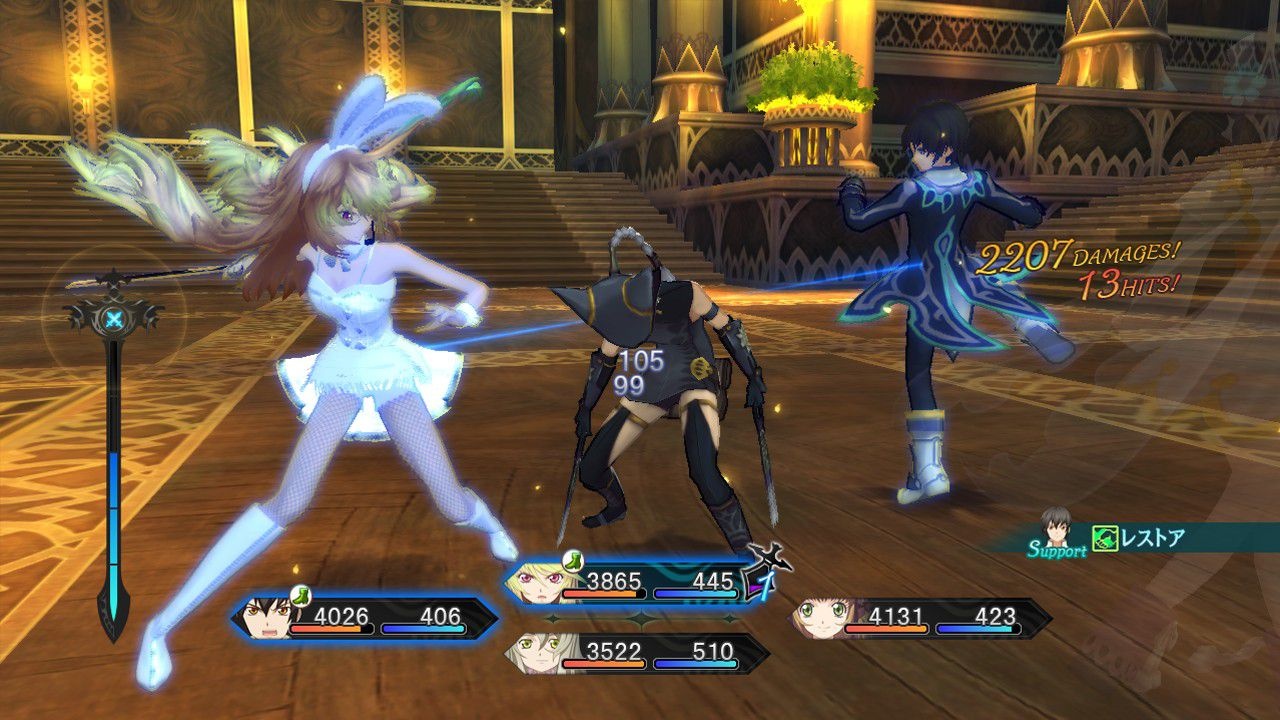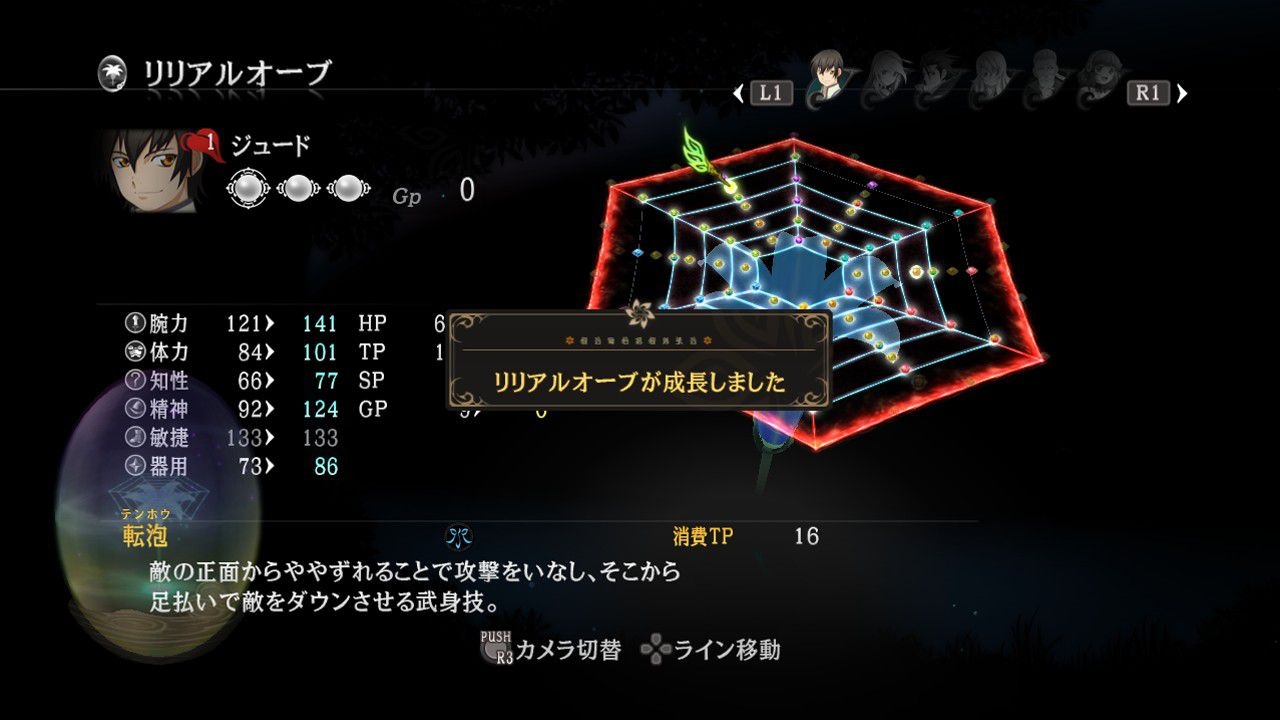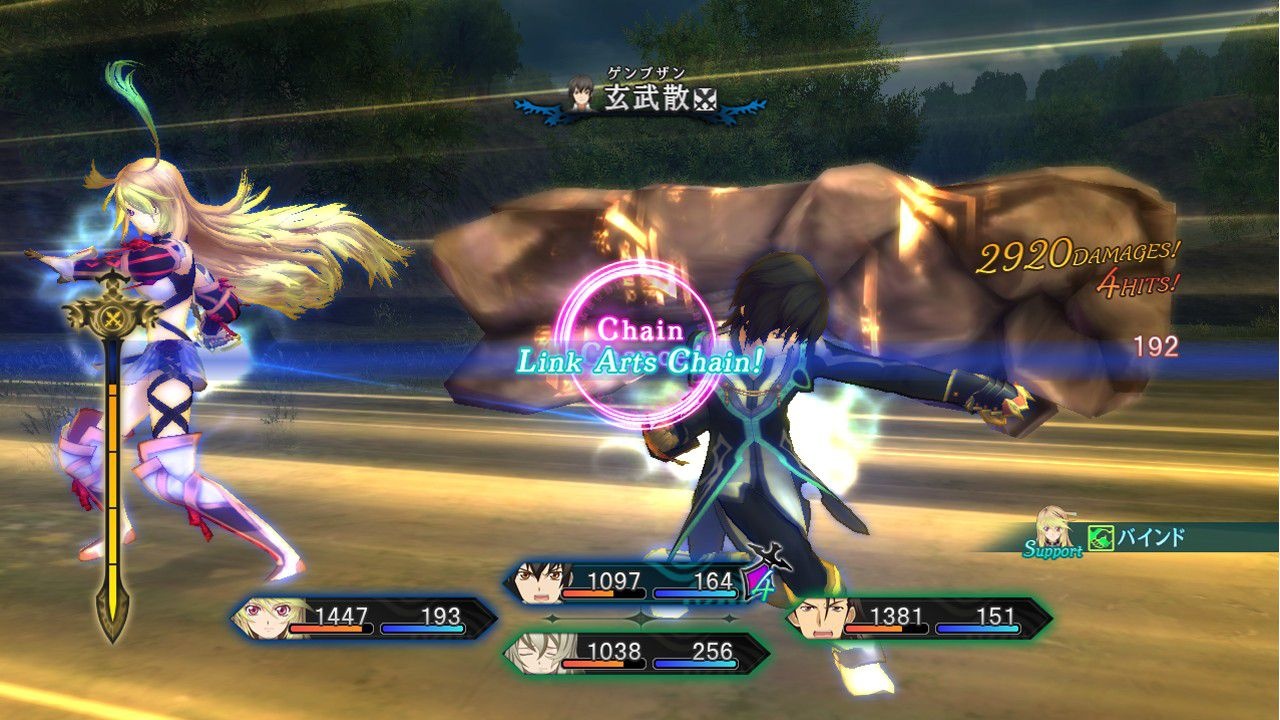Tales of Xillia Updated Hands-On
We check out the first five hours of an import copy of Namco Bandai's latest role-playing game.
The last time we checked on the colorful world of Tales of Xillia, we elaborated on its story and fighting system. This time, we'll explore more about the game's leveling-up system and early major boss fights.
Before getting ahead of ourselves, we should provide a recap. The game's story is about Jude and Milla on the lam from the government authorities after inadvertently messing with the game's MacGuffin, a spirit-draining cannon. Along the way, they come across potentially shady mercenary Alvin; shy-but-powerful magician Elise Lutus; long-ranged spirit user Rowen J. Ilbert; and Jude's childhood friend Leia Rolando. The linear motion combat system in the series now emphasizes cooperation. Players can assign a "master" to tag alongside a "partner" to attack a single target simultaneously, which leads to them juggling an enemy or performing a specific tag-team attack that deals a lot of damage.

The level-up screen also takes a turn for the visually fancy and open ended. Dubbed the Lillial Orb grid, each attribute you can upgrade is displayed in a weblike fashion, from a character's attack or defense rating to his or her TP limit. Activating four adjacent nodes on the web allows you to unlock an additional power-up or skill for free; these range from passive skills that use up SP slots or even active skills that use up TP. To expand the next ring on the web, you need to activate two skills (highlighted with a bigger symbol than the rest) on the outermost ring. It's definitely easier to comprehend than Final Fantasy X's sphere grid system, as each node is laid out in a uniform position and each has symbols representing each attribute.
We could also level up shopkeepers to make them sell better equipment and give us good discounts for lower-tier items. Throughout the dungeons and fields, we amassed a lot of random components and items from encounters or map exploration that we could give to shopkeepers to level up a particular section, be it weapons, armor, or items. While some may argue that the old system of getting better items as you uncover later locales is just fine, power levelers can abuse the system by grinding for materials to access high-powered weapons at an early stage. Plus, it's a lot better than going through the motions of synthesizing different items in a tedious fashion as in past Tales of titles.
We also tangled with a few bosses that gave us quite a challenge as we were getting to grips with the new combo-based battle system. Our first opponent was a squid-turtle hybrid that used water-based attacks. These attacks either surrounded the monster temporarily or shot out in a straight line following its target. If it was cornered or surrounded, it would jump up and do a telegraphed stomp attack that hit close where it landed.

Fortunately, it was slow and weak against fire. Fighting against the beast also taught us the ability to link different artes after performing the team-up attack. Figuring out which artes link with each other after pressing R2 is key in keeping a chain combo going while the enemy is being juggled so that your overlimit bar isn't wasted on just a single attack.
The other boss was a giant man named Jao who comes from the Ha Mil village; we won't disclose much more than that because it is story related. What we can share is that he wielded a giant hammer to attack and could also summon the local wildlife to aid him. Unlike the other monster, he was fast for someone his size and couldn't be interrupted while performing his combo hammer swings that were capped off with a huge area-of-effect earth attack. We had to circle around him while the AI-controlled party members distracted him. It helped a lot that he was weak to wind, so we used Milla's wind slash attack to perform a tag-team attack, with Jude following up with a couple of link artes to pile on the pain.
We anticipate combat to test us harder later in the game, but the overall feel is great and flexible. The tutorial and learning curve of the battles a few hours before the first boss is sufficient to gets new players into the spirit of things, although it helps if they have previous experience with any of the titles using some form of the linear motion battle system (Tales of the Abyss and other titles after that). Figuring out which artes could link with each other during a link artes and tag-team attack is akin to finding out an efficient combo in a 2D fighting game. The system will eventually get deeper as you unlock more moves and passive abilities for each character via the level-up system.

The little touches added onto the seemingly old-school action-heavy role-playing game were appreciated during our playthrough. We could climb onto specific ledges to bypass obstacles, ambush encounters from behind to gain the upper hand in combat (either by stunning or dealing a bit of damage to them), and fast-travel to previously visited locations.
With a good combination of old-school action-heavy trappings and new-age conveniences, Tales of Xillia seems to be shaping up into something potentially grand for RPG fans. The game is currently out now in Japanese, but an English version has yet to be determined.
Got a news tip or want to contact us directly? Email news@gamespot.com
Join the conversation